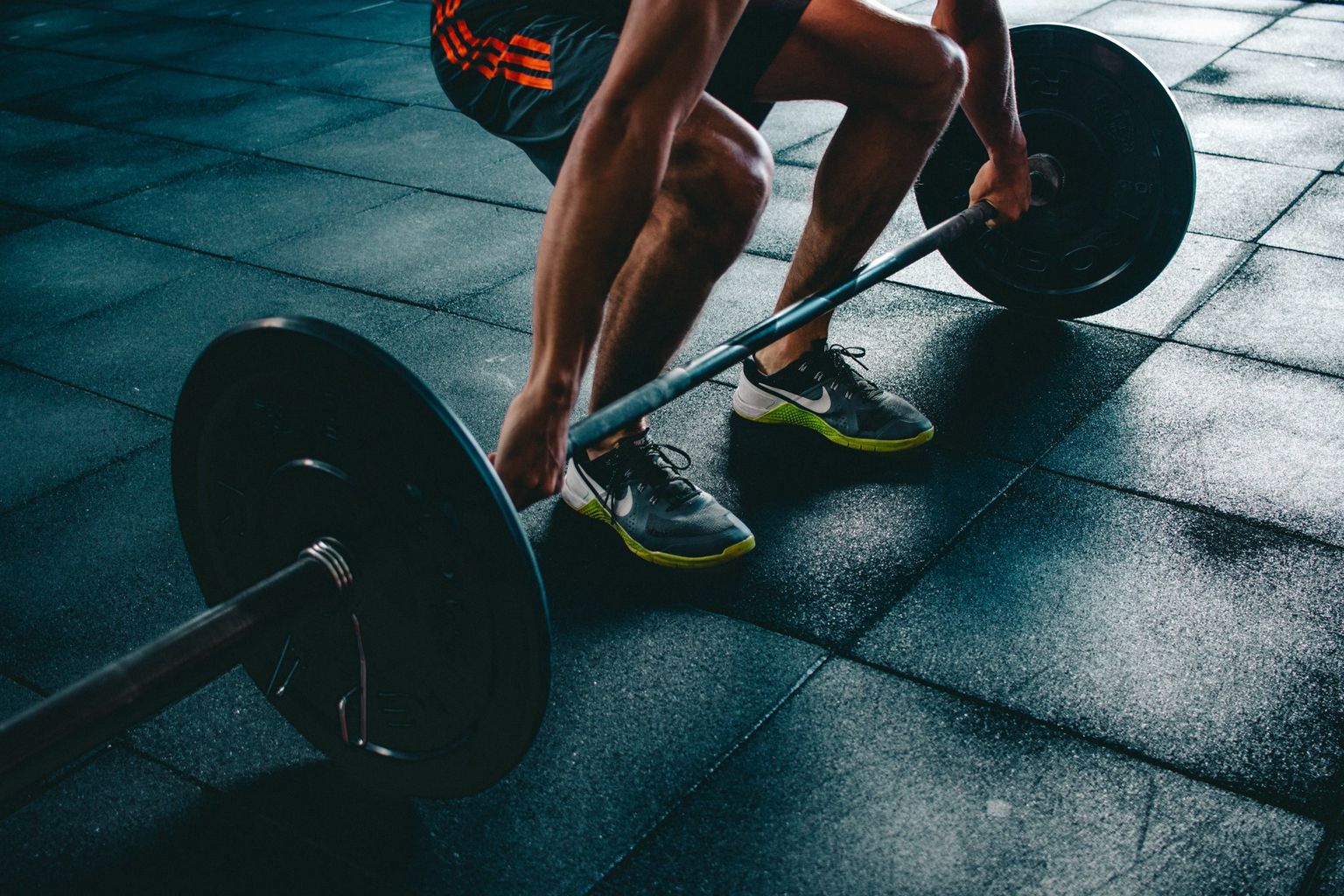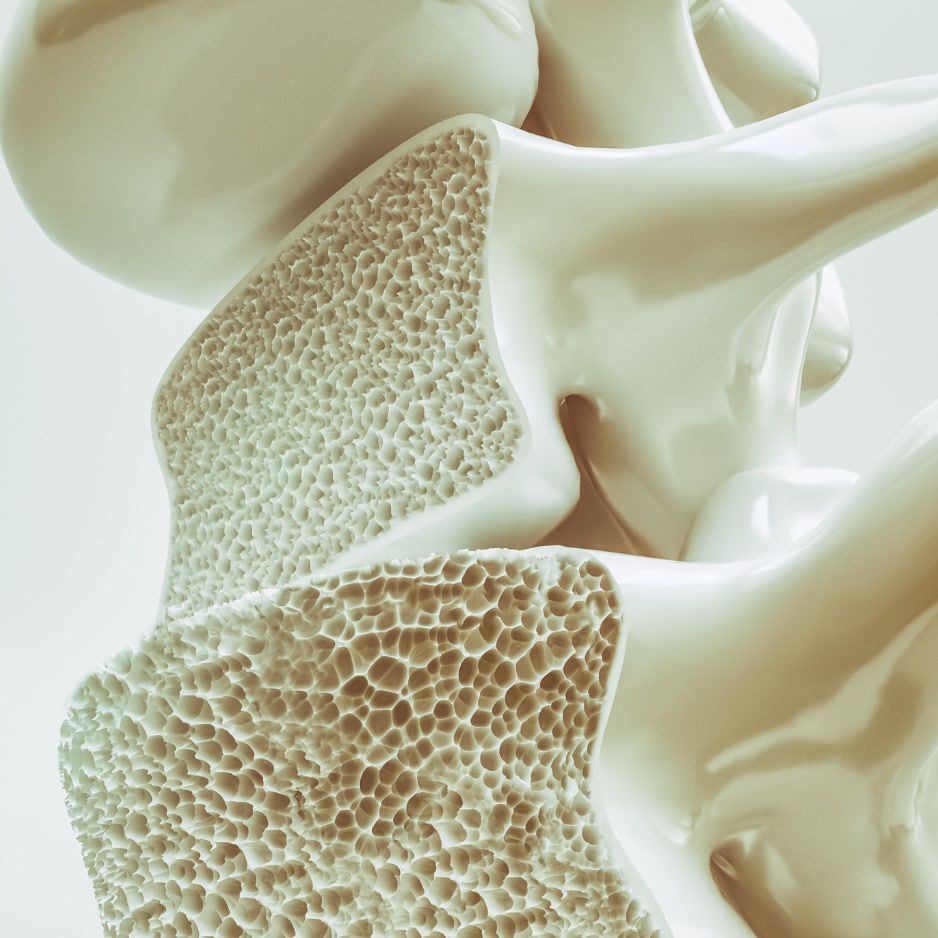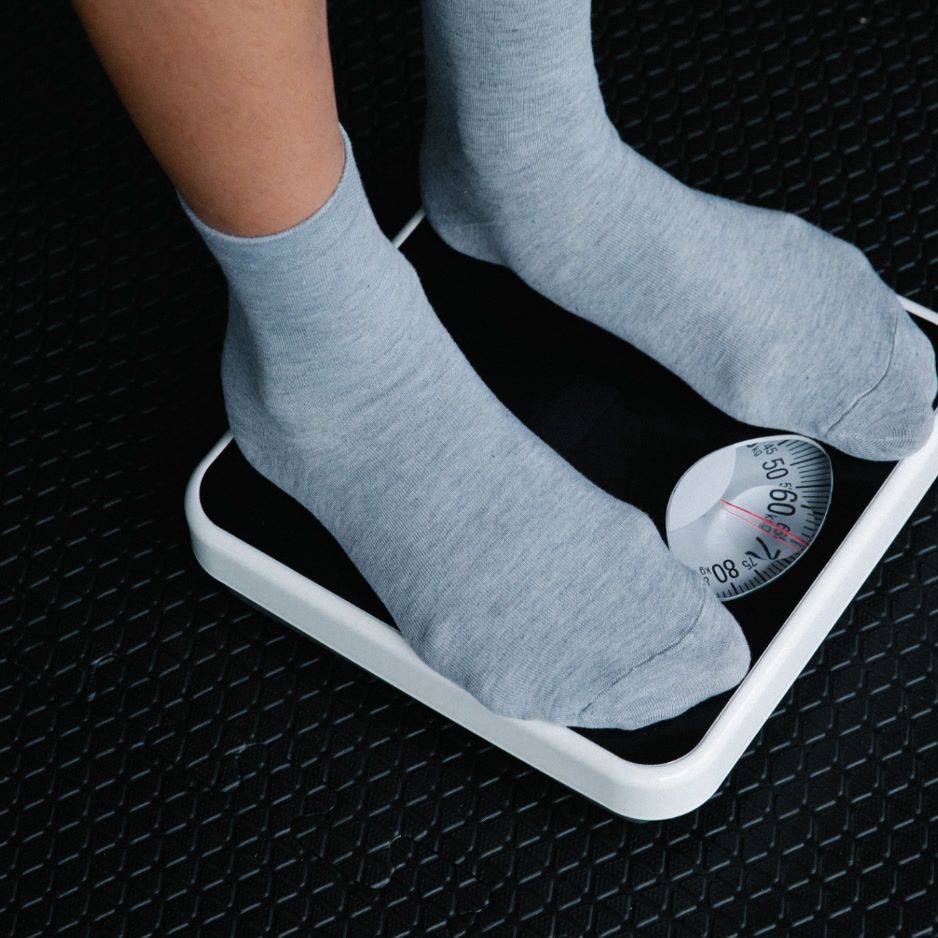Benefits of Hanging for Strength and Spine Health
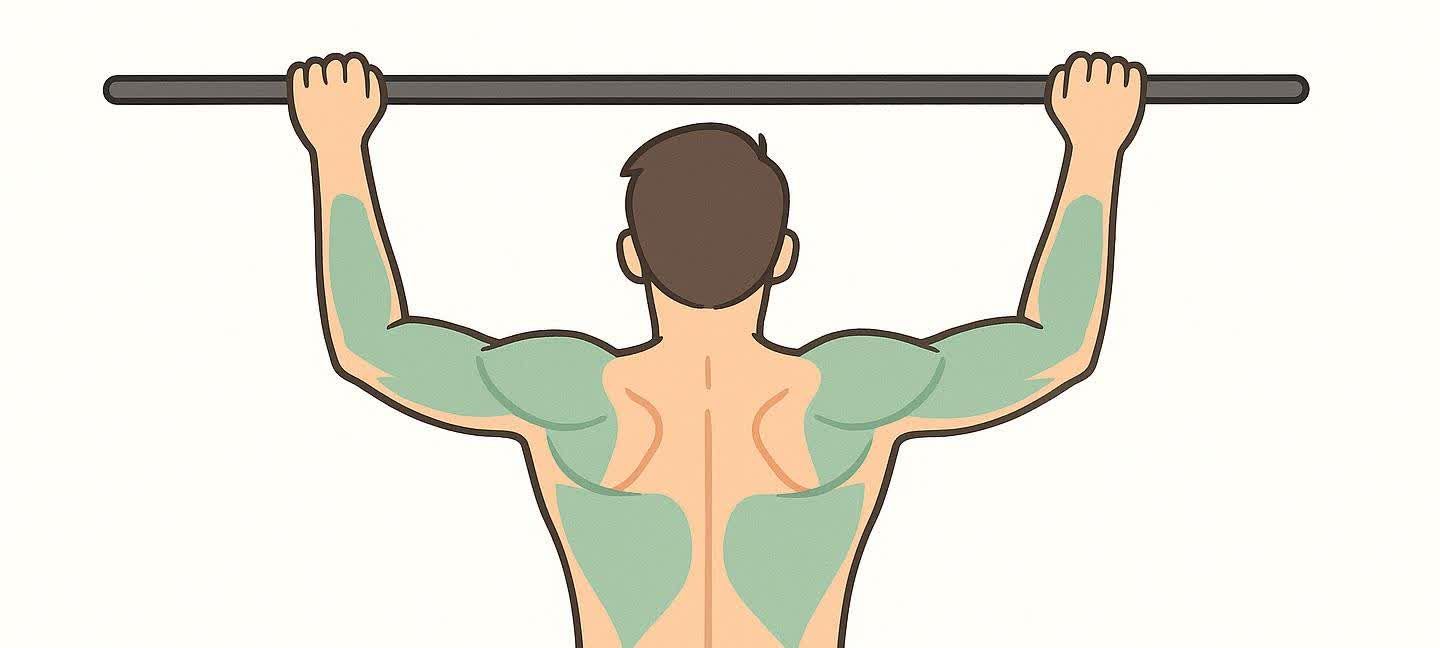
9 Benefits of Hanging for Strength & Spine Health
Hours at a desk can leave your shoulders rounded, your back compressed, and your grip weaker than you’d like. Whether you’re an office worker chasing better posture or a climber trying to stay on the wall longer, a surprisingly simple drill can help: just dead hang—literally—from a bar for 30 seconds a day.
What Exactly Is a Dead Hang?
A dead hang is the most basic version of hanging: you grab an overhead bar with straight arms and let gravity do its thing. No kipping, swinging, or pull-ups—just a passive stretch and isometric hold. Despite its simplicity, this static position activates the forearms, shoulders, lats, and even deep core stabilizers, according to research compiled by Healthline.
9 Science-Backed Benefits of Hanging
1. Super-Charges Grip Strength
According to GoodRx’s overview of dead-hang protocols, the exercise challenges the hand, wrist, and forearm muscles. Primary research supports this claim: a study on sport climbers found that four weeks of intermittent weighted hangs increased grip endurance by roughly 25 percent. Stronger grip isn’t just for athletes—population research shows higher grip strength predicts lower cardiovascular and all-cause mortality (Lancet PURE Study).
2. Decompresses Your Spine
Gravity pulls the body downward during a hang, creating gentle traction that increases the space between vertebrae. This temporary decompression can ease pressure on discs and nerves, helping hydrate spinal tissues after long bouts of sitting (Healthline). Many people report immediate relief in the lower back and an overall “stretch-out” sensation after a set of hangs.
3. Opens Tight Shoulders & Improves Mobility
The overhead position externally rotates the shoulder joint and lengthens tight lats, pecs, and rotator-cuff tissue—common culprits in impingement and poor overhead reach (GoodRx). Spending time in this position retrains joints to tolerate overhead load, which can make pressing, swimming, or even reaching the top shelf feel smoother.
4. Builds Forearm & Upper-Back Endurance
A dead hang is an isometric hold, meaning muscles work without changing length.
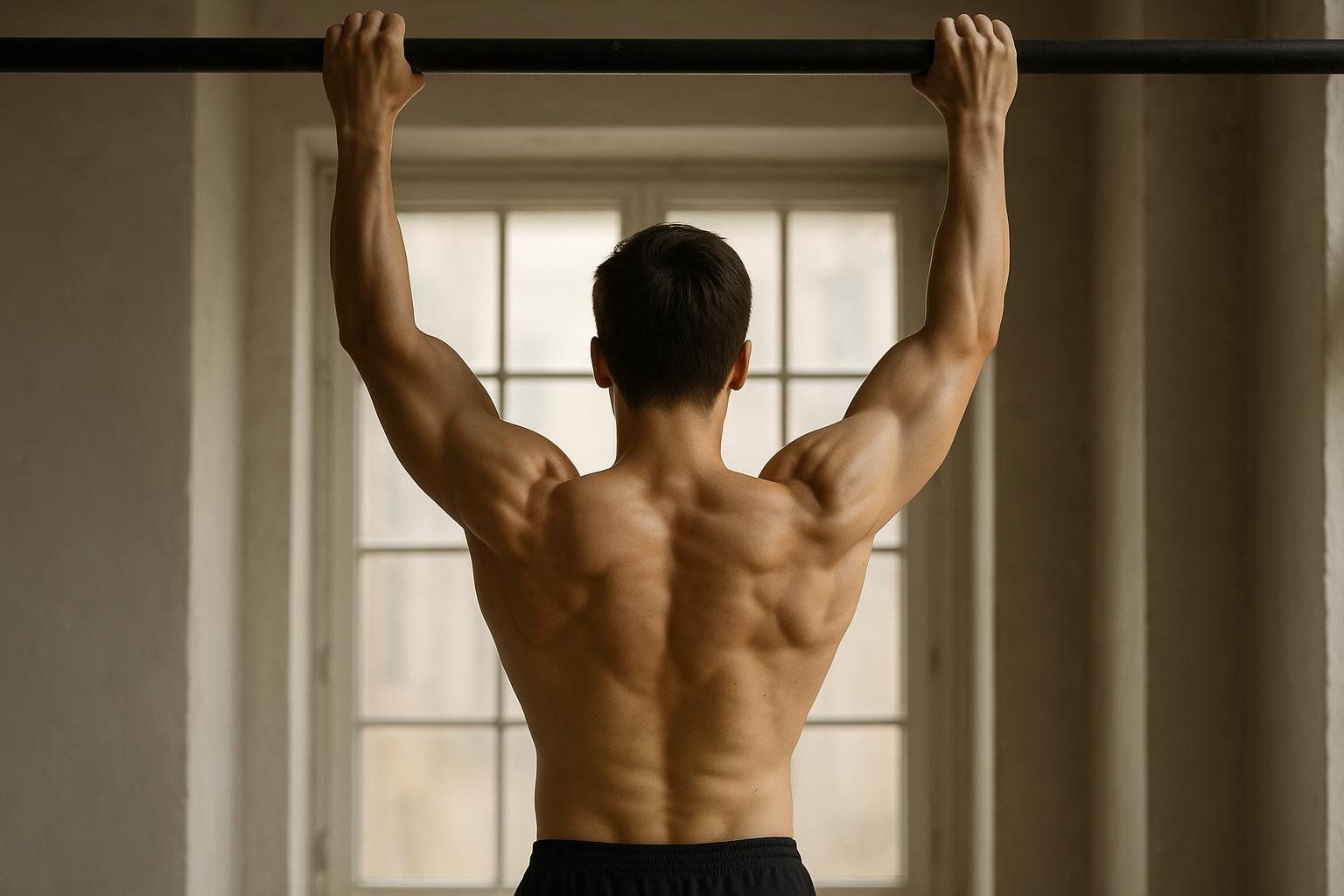
Maintaining the position teaches forearm flexors, lats, and mid-back stabilizers to stay “switched on” for longer periods—exactly what climbers, obstacle-course racers, and even gardeners need. Over time, this endurance reduces early fatigue during any activity that requires prolonged gripping or hanging.
5. Posture Reset for Desk Workers
Regular hanging may help counter the rounded-shoulder “tech neck” posture by activating spinal extensors and opening the chest (GoodRx). Adding a few sets between meetings provides a much-needed screen break and reminds the body what an upright spine feels like.
Pro-Tip: Pair three 30-second hangs with our mobility exercises for office workers for a quick desk-break reset.
6. Preps You for Pull-Ups & Climbing
If you’re working toward your first pull-up, dead hangs condition the exact grip and shoulder strength you’ll need. Check out our guide to strength training for beginners for complementary exercises that bridge the gap to that first rep.
7. Supports Joint Health & Injury Resilience
Gentle traction across elbows, shoulders, and wrists encourages synovial-fluid circulation, which helps keep cartilage nourished and joints moving smoothly (Arthritis Foundation). Consistent hanging can also strengthen surrounding connective tissue, potentially lowering the risk of overuse injuries in throwing or racquet sports.
8. Engages Your Core (Yes, Really!)
Maintaining a neutral rib cage and pelvis during a hang forces deep core and glute muscles to stabilize the spine against sway.
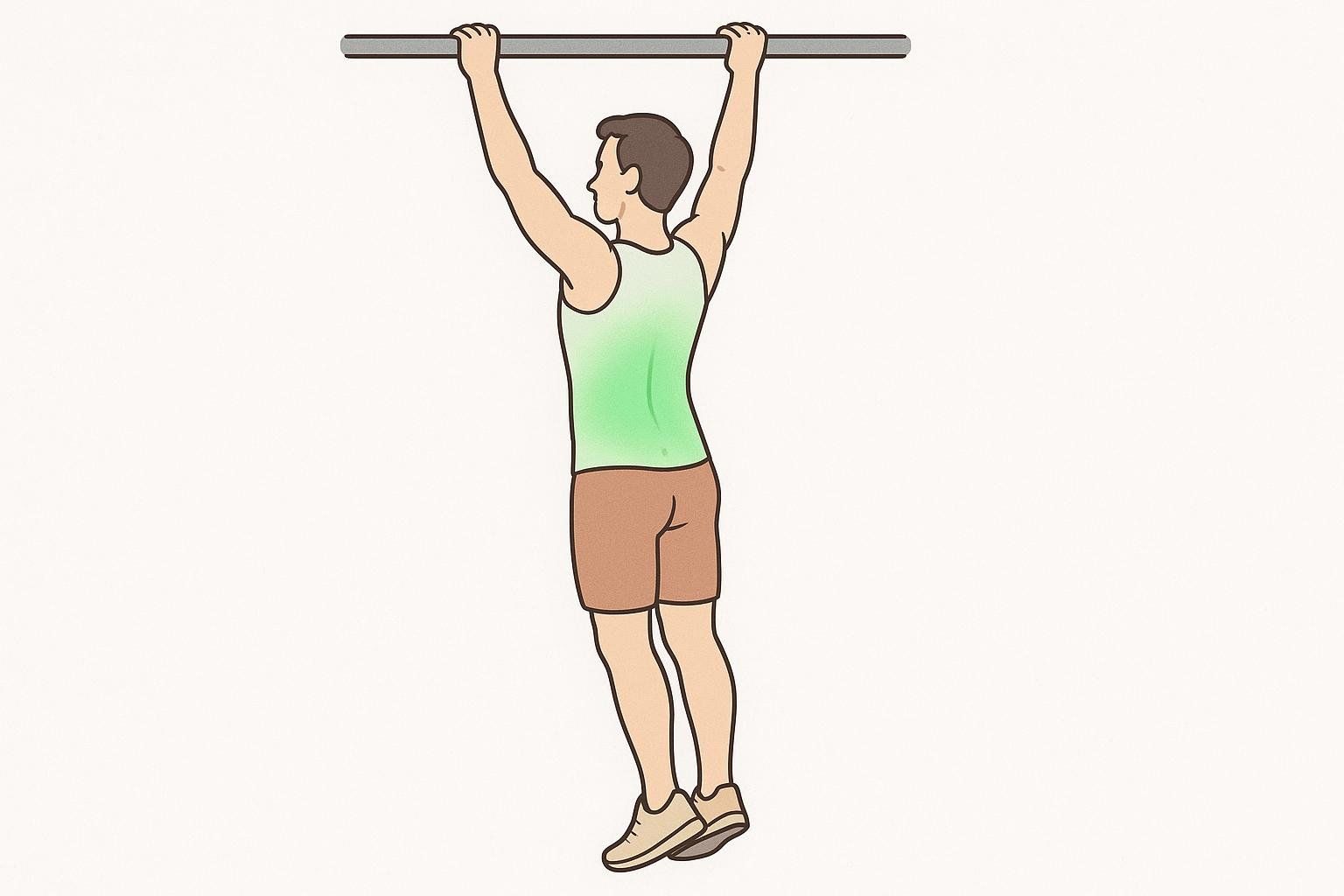
This anti-movement challenge reinforces trunk stability that carries over to running, lifting, and daily activities.
9. Easy Active-Recovery Tool
Because a passive hang places minimal metabolic stress on the body, it works well on rest days to promote blood flow and relieve stiffness (Women’s Health UK). Think of it as a gravity-assisted stretch that costs almost no recovery currency yet leaves muscles and connective tissue feeling refreshed.
Beginner-to-Advanced Hanging Progression Plan
| Phase | Goal | Prescription | Progress When… |
|---|---|---|---|
| Foundations | Tolerate overhead position | 5 × 15-second assisted hangs (feet on a box), three times per week | You can hold 5 × 30-second assisted hangs |
| Builder | Develop endurance | 3 × 30-second dead hangs with 60-second rests, three times per week | You can hold one unbroken 60-second hang |
| Strength | Boost max grip | 5 × 10-second weighted hangs at 20–30 percent of body weight, twice per week | You can add 40 percent or more of body weight for 10 seconds |
| Mastery | Transition to single-arm | 4 × 10-second single-arm hangs per side (use a light resistance band if needed), twice per week | You can hold an unassisted 10-second single-arm hang on each side |
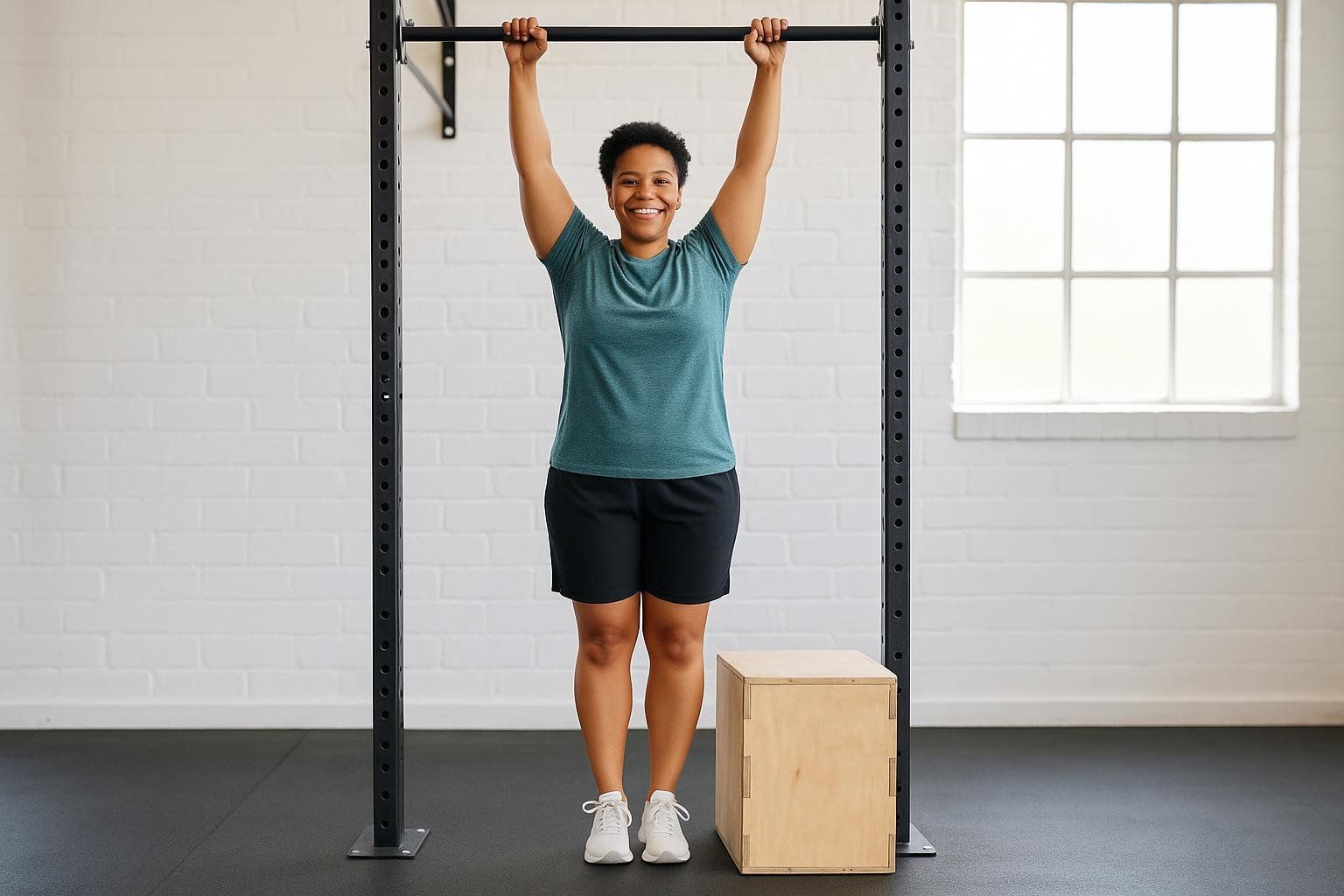
Consider using a workout journal or app to track your hang times and log your progress.
Perfect Form Checklist
- Use a shoulder-width overhand grip to start.
- Engage core—think ribs down, glutes tight.
- Let shoulders shrug upward for spinal decompression (passive hang) or pull them slightly down to build scapular strength (active hang).
- Keep elbows straight; knees softly bent to avoid swinging.
- Breathe slowly through the nose.
Struggling with discomfort? Lower until toes brush the floor to deload some weight.
Popular Variations
- Active hang: depress and retract shoulder blades to train scapular strength.
- Neutral-grip hang: palms facing; often easier on elbows.
- Mixed-grip hang: one palm forward, one back—common in powerlifting.
- L-sit hang: raise legs to hip height for an intense core hit.
How Long Should You Hang?
Most adults see benefits with 30-second hangs, three to four rounds per session, three times per week. Advanced athletes can work up to two-minute holds or weighted sets. Listen to your joints and progress gradually.
Safety & Contraindications
- Avoid hanging if you have acute shoulder injuries, recent surgeries, or severe carpal-tunnel symptoms.
- Warm up wrists and shoulders first.
- Discontinue if you feel sharp pain or numbness.
When in doubt, consult a qualified healthcare provider.
Track Your Gains the BodySpec Way
Grip strength can improve within a few weeks as neuromuscular pathways adapt, but building measurable lean mass in your forearms and back typically requires 8–12 weeks of consistent effort. A DEXA scan can quantify increases in those areas, offering objective proof that your hanging routine is paying off.
Schedule a follow-up scan every 8–12 weeks to watch your muscle distribution evolve and fine-tune your programming.
Ready to get data-driven? Book a BodySpec scan at a mobile clinic near you.
FAQ
Are dead hangs safe for seniors?
With modifications like partial weight support and clearance from a physician, assisted hangs can be safe and beneficial for older adults. They may help maintain grip strength and shoulder range of motion.
Can hanging fix my posture?
It’s a powerful tool, but it works best alongside targeted mobility and strength work.
How soon will I notice results?
Grip strength often improves within the first few weeks as your nervous system adapts. Mobility and spinal-decompression benefits typically become noticeable after a month of consistent practice.
